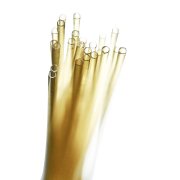Introduction to neurointerventional therapy
Neurointerventional therapy is a minimally invasive, precise treatment approach that uses imaging techniques (such as CT, MRI, or DSA) to guide microcatheters, guidewires, and other instruments through the blood vessels to the lesion site, allowing for procedures like vascular reconstruction, thrombectomy, and embolization. Primarily used to treat neurological conditions such as cerebral artery stenosis, cerebral aneurysms, and acute ischemic stroke, this technique combines interventional radiology and neurosurgery, leveraging advanced imaging navigation to precisely target cerebrovascular disease. With its advantages of minimal invasiveness, high precision, and reduced postoperative risks, neurointerventional therapy has progressively become a frontline treatment for neurological disorders.
Endovascular Intervention
Indications: Cerebral artery stenosis, carotid artery stenosis, etc.
Advantages: By utilizing stents, balloon angioplasty, and other devices, endovascular intervention can rapidly restore blood flow, preventing high-risk events such as stroke. It is minimally invasive, allows for quick recovery, and offers precise operation, making it particularly suitable for stenotic lesions.
Challenges: This technology relies heavily on imaging guidance and high-precision equipment, and the catheter manipulation process is complex, requiring advanced technical skills from physicians.
Thrombectomy
Indications: Primarily used for acute ischemic stroke.
Advantages: Thrombectomy enables the rapid removal of blood clots within the critical window following a stroke, quickly restoring blood flow and significantly reducing patient mortality and disability rates. Compared to pharmacological thrombolysis, the surgical approach is more effective and has a higher success rate.
Challenges: It must be performed within a short time window after the stroke onset; outcomes may diminish significantly if performed outside this timeframe. The procedure also requires expensive, high-precision imaging equipment and may carry risks of vascular injury or rebleeding complications.
Embolization
Indications: Cerebral aneurysms, intracranial arteriovenous malformations, etc.
Advantages: Under imaging guidance, embolization allows precise localization of the diseased blood vessels, effectively blocking blood flow to aneurysms or other vascular lesions with embolic materials, thereby preventing severe complications like rupture and bleeding, with minimal invasiveness.
Challenges: The selection of embolic materials and the precise injection location require meticulous control; the procedure is complex, and incomplete embolization or improper release of materials may lead to localized ischemia or damage to normal vessels.
Percutaneous Puncture Treatment
Indications: Spinal diseases (such as herniated discs) and certain specific intracranial lesions.
Advantages: This technique is flexible, minimally invasive, and can precisely target the lesion area, reducing impact on surrounding healthy tissue. It is suitable for treating certain spinal and brain lesions.
Challenges: Precise puncture localization is essential; otherwise, there is a risk of nerve damage or other complications. For deep or complex lesions, percutaneous puncture treatment alone may be less effective and may require combination with other treatment methods.
Neurointerventional therapy, as a continuously evolving and cutting-edge medical technique, is expected to develop further towards minimally invasive and intelligent approaches. The integration of artificial intelligence and imaging technologies, along with advancements in robotic-assisted surgery, will further enhance the precision and safety of neurointerventional procedures. Additionally, progress in material science will enable the use of catheters with greater flexibility and durability, making treatments more efficient. As these technologies advance, neurointerventional therapy is likely to expand its scope of indications, providing safe and effective treatment options for more patients with neurological diseases.
Eco Polymer: Where Innovation Meets Excellence in Medical Device Manufacturing.


Contact us
As a leading Contract Manufacturing Organization (CMO), we excel in custom medical catheters and membranes, from prototyping to mass production. Our focus: unparalleled R&D innovation and rigorous quality validation.




